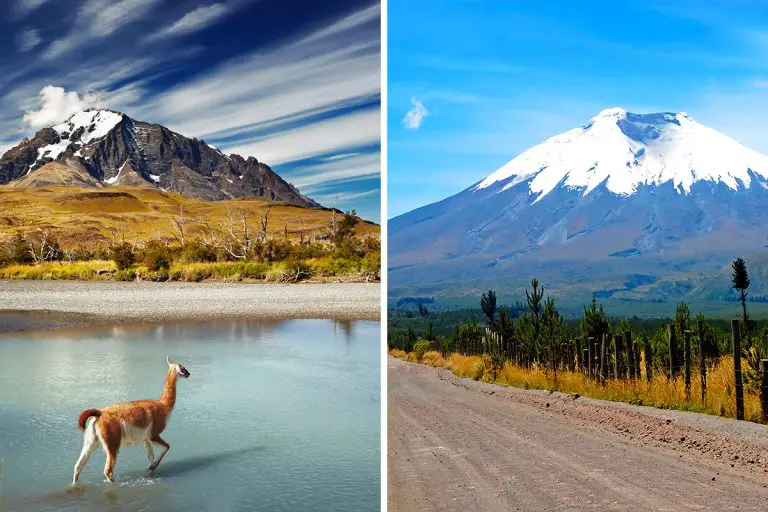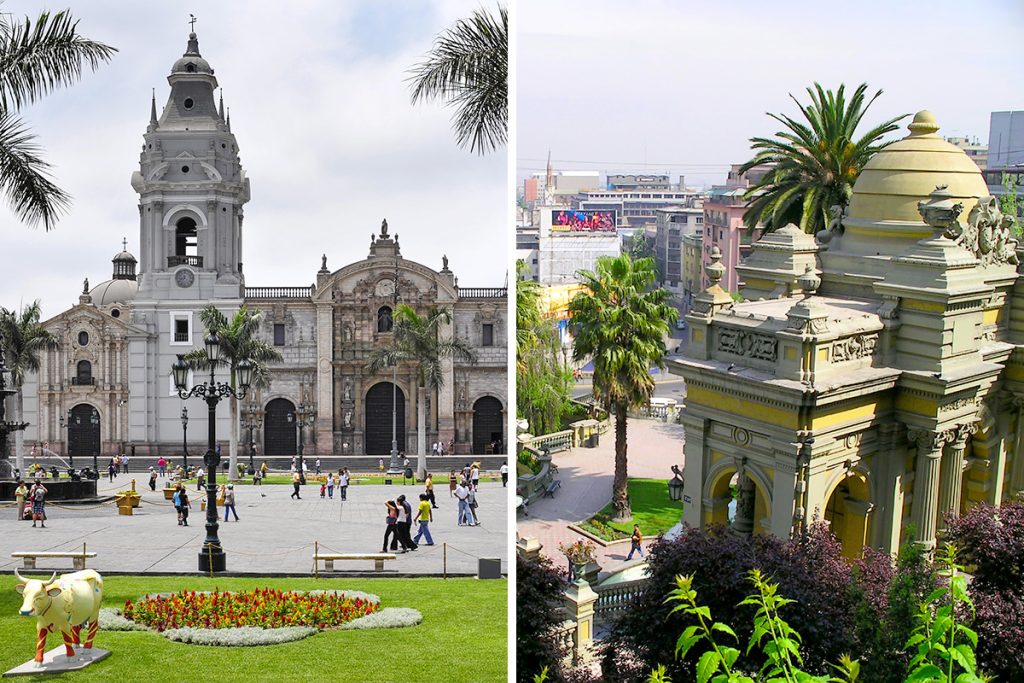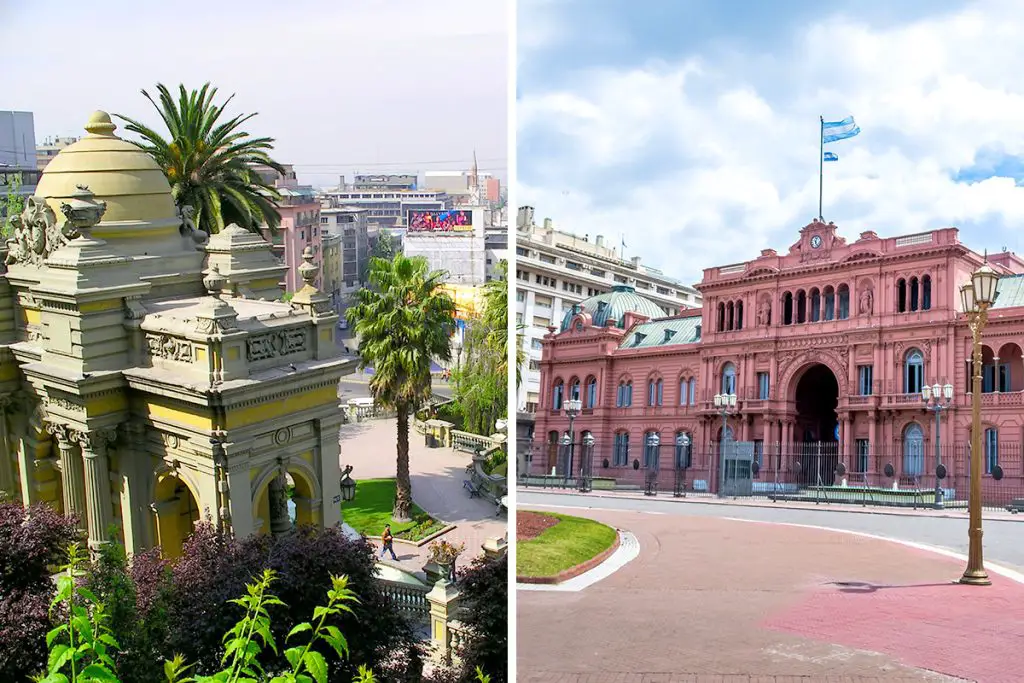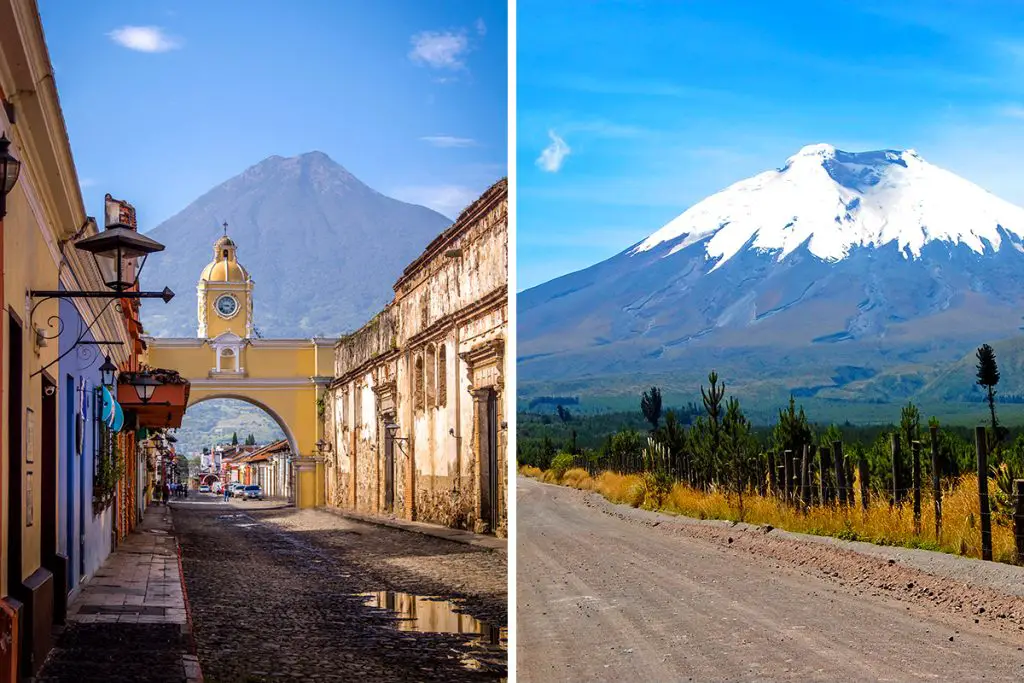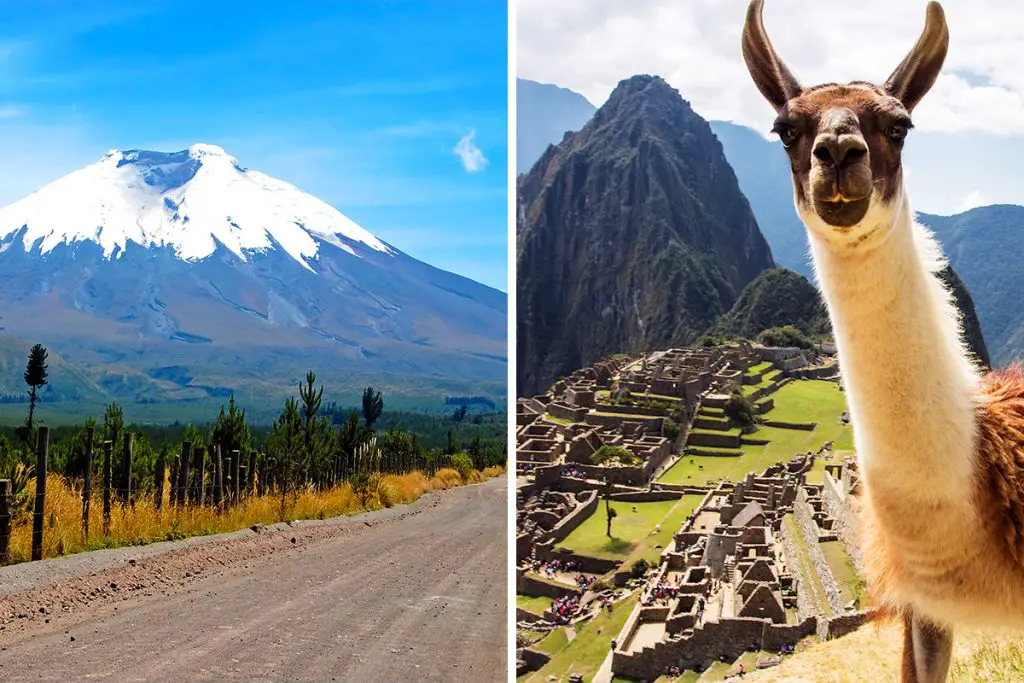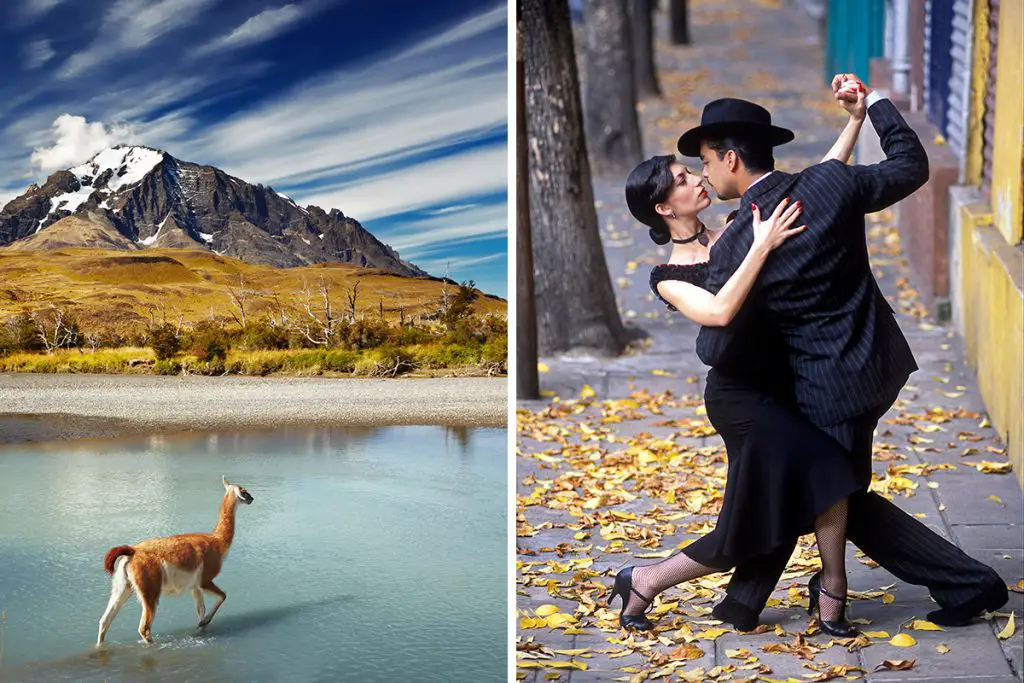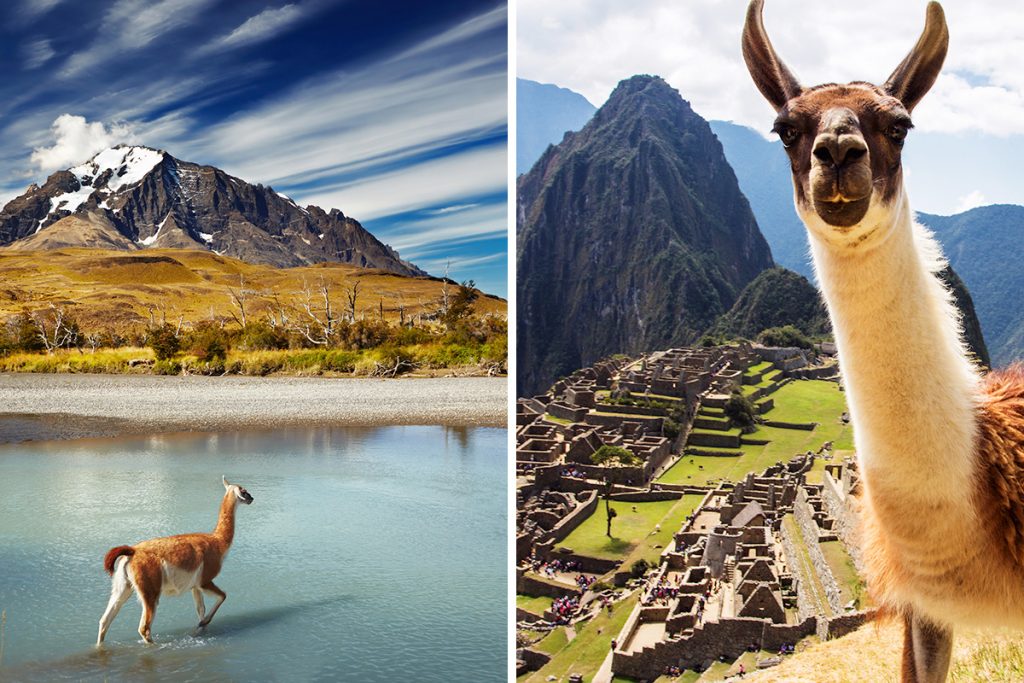Each destination has its charm and attractions that cater to different interests. Are you curious about what sets these two South American gems apart? Continue reading this comparison to help you determine the ideal destination for your next adventure.
History & Culture
Diving into the history and culture of Chile and Ecuador reveals their distinct identities. Both countries have rich pasts that shaped their present-day customs and traditions.
Chile’s history is marked by the influence of indigenous peoples, such as the Mapuche, and Spanish colonization. The blend of native and European cultures has created a unique fusion in Chilean arts, music, and dance. Chile also boasts a thriving literary scene, with famous writers like Pablo Neruda and Isabel Allende.
Ecuador, on the other hand, was once part of the Inca Empire, leaving a significant impact on its cultural identity. Spanish colonization also played a role in shaping the country’s traditions. Ecuador’s indigenous communities, such as the Kichwa and Shuar, maintain their distinct customs, showcasing the nation’s cultural diversity.
In both Chile and Ecuador, the local people are known for their warm hospitality. They take pride in their heritage and celebrate it through various festivals and events. Chile’s Fiestas Patrias and Ecuador’s Inti Raymi are prime examples of these vibrant celebrations.
Chile and Ecuador also have unique art scenes. Chile is renowned for its street art, particularly in Valparaíso, while Ecuador is famous for its handicrafts and traditional paintings. These artistic expressions provide a glimpse into the heart and soul of each nation.
In summary, Chile and Ecuador offer diverse and rich cultural experiences. While Chile has a distinct mix of indigenous and European influences, Ecuador showcases the legacy of the Inca Empire and its vibrant indigenous communities.
Attractions & Activities
When it comes to attractions and activities, both Chile and Ecuador have plenty to offer. They cater to a wide range of interests, from outdoor enthusiasts to history buffs.
Chile’s diverse landscape offers an array of outdoor activities. Adventurers can explore the Atacama Desert, hike the Andes Mountains, or venture into the stunning Torres del Paine National Park. For history enthusiasts, Santiago’s museums and historic neighborhoods provide insight into Chile’s past.
In Ecuador, nature lovers can delve into the Amazon Rainforest, discover the cloud forests, or marvel at the volcanic landscapes of the Avenue of the Volcanoes. History buffs can explore Quito’s well-preserved colonial architecture or visit the ancient Inca ruins of Ingapirca.
Chile is also a haven for stargazers. Its clear skies and minimal light pollution make it an ideal destination for astronomy enthusiasts. The Elqui Valley and the Atacama Desert are home to some of the world’s most advanced observatories.
Ecuador, being located on the equator, offers a unique experience for those who wish to stand in both hemispheres simultaneously. The Middle of the World Monument near Quito marks the spot where the equator passes through the country.
Both countries provide opportunities for wildlife encounters. In Chile, you can observe penguins, whales, and other marine life along its extensive coastline. Ecuador’s Galápagos Islands are home to an array of unique species, like the giant tortoise and marine iguana, which are not found anywhere else on Earth.
In conclusion, Chile and Ecuador boast a wide range of attractions and activities. Whether you’re seeking outdoor adventures, historical sites, or unique wildlife experiences, both countries have something to offer that will satisfy your wanderlust.
Beaches
When it comes to beach vacations, both Chile and Ecuador offer stunning coastal escapes. Each country has its unique charm and selection of beautiful beaches to explore.
Chile, with its 2,653-mile (4,270-kilometer) coastline, presents a diverse range of beaches. In the north, you’ll find arid desert landscapes with pristine shores, like Bahía Inglesa. Further south, the central coast is home to popular beach towns like Viña del Mar, which boasts golden sands and vibrant seaside promenades.
Ecuador’s coastline is shorter, stretching 1,390 miles (2,237 kilometers), but it’s equally captivating. Beaches like Montañita and Salinas are popular among both locals and tourists for their lively atmosphere and excellent surfing conditions.
For a more serene experience, the secluded shores of Los Frailes in Machalilla National Park are perfect for relaxation and wildlife spotting.
Chile’s southern coast offers rugged beauty and unique experiences. Chiloé Island, for instance, is known for its picturesque fishing villages and UNESCO-listed wooden churches. The island’s beaches, like Cucao and Cole-Cole, provide a tranquil setting amid lush forests.
In Ecuador, the beaches of Esmeraldas Province showcase the country’s Afro-Ecuadorian culture. The vibrant town of Atacames is a favorite spot for beachgoers, while nearby Mompiche offers great surfing opportunities and a laid-back vibe.
Accessibility to beaches differs in both countries. In Chile, the coastal areas can be reached by car or bus from major cities like Santiago. In Ecuador, many of the beaches are within a short drive from cities like Guayaquil or Quito, making them more accessible for weekend getaways.
In conclusion, both Chile and Ecuador offer diverse and stunning beach experiences. Whether you prefer bustling beach towns or secluded, pristine shores, there’s a perfect coastal escape for you in each country.
Eating, Drinking & Nightlife
Savoring the local cuisine, enjoying a drink, and experiencing the nightlife are essential parts of any vacation. Chile and Ecuador both have their unique food scenes, drinks, and vibrant nightlife to discover.
Chilean cuisine is characterized by its fresh seafood, delicious meats, and flavorful produce. Empanadas, pastel de choclo, and cazuela are some of the must-try dishes. Seafood lovers will be delighted by the variety of fish and shellfish dishes, like ceviche and machas a la parmesana.
Ecuadorian food is a fusion of indigenous, Spanish, and African influences. Locro de papa, encebollado, and llapingachos are some traditional dishes that you should taste. The coastal regions of Ecuador are known for their seafood dishes, while the Andean highlands offer hearty meat-based meals.
When it comes to drinks, Chile is famous for its wine industry. The country’s diverse climate allows for the production of a wide range of wines, from robust reds to crisp whites. Pisco, a grape brandy, is another popular alcoholic beverage, often enjoyed in cocktails like the Pisco Sour.
Ecuador, on the other hand, is known for its artisanal spirits, like aguardiente and Zhumir. The country also has a growing craft beer scene, with local breweries offering unique and flavorful brews.
Chile’s nightlife scene is centered around cities like Santiago and Valparaíso. These urban centers boast a range of lively bars, clubs, and live music venues where you can dance the night away. The coastal town of Viña del Mar also has a bustling nightlife scene during the summer months.
In Ecuador, the cities of Quito and Guayaquil offer a vibrant nightlife with an array of clubs, bars, and live music venues. For a more laid-back experience, the beach towns of Montañita and Atacames provide a lively atmosphere with beachfront bars and open-air dance clubs.
To sum up, both Chile and Ecuador have diverse and enticing food and drink scenes, as well as exciting nightlife options. Whether you prefer tasting traditional dishes or exploring local bars and clubs, you’ll find unique and memorable experiences in each country.
Shopping
When it comes to shopping, both Chile and Ecuador have their unique offerings. Let’s dive into the shopping experiences you can expect at each destination.
In Chile, you’ll find a mix of modern shopping centers and traditional markets. Santiago, the capital, boasts upscale malls like Costanera Center and Parque Arauco, where you can find international brands and local designers.
For a more authentic shopping experience, visit La Vega Central Market or Los Dominicos Handicraft Village, where you can buy artisanal crafts, souvenirs, and local products.
On the other hand, Ecuador offers a vibrant shopping scene with a focus on traditional crafts and handmade items. In Quito, you’ll find colorful markets like Mercado Artesanal La Mariscal, where you can buy textiles, ceramics, and jewelry.
Otavalo Market, located outside the capital, is one of the largest indigenous markets in South America, offering an array of traditional crafts, clothing, and souvenirs.
To sum up, Chile offers a blend of modern shopping centers and local markets, while Ecuador excels in traditional crafts and indigenous markets. Depending on your preferences, you’ll enjoy a unique shopping experience in each country.
Accommodation
Finding the perfect place to stay is essential for any trip. Let’s compare the accommodation options in Chile and Ecuador.
Chile has a wide range of accommodation options, from luxury hotels to budget-friendly hostels.
In popular tourist destinations like Santiago and Valparaíso, you’ll find well-known hotel chains and charming boutique hotels. For budget travelers, hostels and guesthouses are available throughout the country.
Ecuador also offers various accommodation choices to suit different budgets and preferences.
In cities like Quito and Guayaquil, you can find luxury hotels, boutique properties, and budget hostels. For a more unique experience, consider staying in an eco-lodge in the Amazon rainforest or a traditional hacienda in the Andean highlands.
In conclusion, both Chile and Ecuador provide diverse accommodation options to cater to every traveler’s needs. Whether you’re looking for luxury or budget-friendly stays, you’ll find suitable lodging in both destinations.
Family-Friendliness & Children’s Activities
When planning a family vacation, it’s essential to consider kid-friendly activities and attractions. Let’s compare the family-friendliness of Chile and Ecuador.
In Chile, you’ll find plenty of exciting activities for the whole family. The capital, Santiago, offers interactive museums like the Interactive Museum Mirador (MIM) and parks such as Fantasilandia, an amusement park filled with rides and games.
For outdoor adventures, consider visiting the Atacama Desert or Torres del Paine National Park, where you can enjoy family-friendly hikes and wildlife encounters.
Ecuador also boasts a range of family-oriented attractions and activities. In Quito, the Middle of the World monument is an educational and entertaining experience for kids, while the city’s many parks provide outdoor fun.
For animal lovers, the Galapagos Islands offer a once-in-a-lifetime opportunity to see unique wildlife up close, and the Amazon rainforest provides guided tours suitable for families.
Both Chile and Ecuador have numerous family-friendly accommodations, including hotels with kids’ clubs and all-inclusive resorts. In addition, local tour operators can arrange child-friendly excursions, ensuring a memorable experience for everyone.
In summary, both Chile and Ecuador offer a variety of family-friendly attractions and activities. Whether you prefer city adventures or outdoor exploration, you’ll find something to suit the whole family in both destinations.
Getting There & Getting Around
Traveling to and around your chosen destination is an important factor in planning your trip. Let’s compare how to get to Chile and Ecuador and the transportation options available within each country.
To reach Chile, most international travelers will fly into Santiago’s Arturo Merino Benítez International Airport. From there, you can find flights to other destinations within Chile or travel by bus or car. Domestic flights are also available for longer distances.
For Ecuador, the main entry point for international travelers is Mariscal Sucre International Airport in Quito. Like Chile, Ecuador offers domestic flights to popular destinations, such as the Galapagos Islands or Guayaquil. Buses are another popular mode of transportation for getting around the country.
In both Chile and Ecuador, rental cars are available if you prefer to explore at your own pace. However, keep in mind that driving conditions may vary, especially in remote areas. Public transportation, such as buses and taxis, is widely available in major cities.
In conclusion, both Chile and Ecuador are accessible by air, with domestic flights and ground transportation options making it easy to get around. Depending on your travel preferences, you can choose from a variety of transportation methods to explore these beautiful countries.
Weather
Weather plays a significant role in your travel plans. Let’s compare the climates of Chile and Ecuador to help you decide when to visit each destination.
Chile has a diverse climate due to its long, narrow shape. In the north, the Atacama Desert experiences hot days and cold nights with little rainfall. Temperatures can reach up to 86°F (30°C) during the day and drop to 50°F (10°C) at night.
Central Chile has a Mediterranean climate, with warm summers and cool, wet winters. The south experiences a colder, wetter climate, with heavy rainfall and snow in the Andes.
Ecuador, located on the equator, has a more consistent climate throughout the year. Coastal areas have a tropical climate with warm temperatures, averaging around 77°F (25°C). The Andean highlands are cooler, with temperatures ranging from 50°F (10°C) to 68°F (20°C).
The Amazon region experiences hot and humid conditions, with average temperatures around 82°F (28°C).
Both countries have distinct wet and dry seasons. In Chile, the wet season is generally from May to August, while Ecuador experiences heavier rainfall from December to May.
In conclusion, Chile offers a range of climates due to its diverse geography, while Ecuador has a more consistent, tropical climate. Consider your weather preferences when planning your trip to either destination.
Safety
Safety is an important factor to consider when traveling. Let’s look at the safety aspects of visiting Chile and Ecuador.
In general, Chile is considered one of the safest countries in South America. Petty crime, such as pickpocketing and bag snatching, can occur in crowded areas, but violent crime is relatively rare. It’s important to take precautions, like not displaying valuables and being aware of your surroundings.
Ecuador also has some safety concerns, mainly petty crime in larger cities. As in Chile, it’s essential to take precautions to protect yourself and your belongings. Additionally, pay attention to travel advisories related to natural hazards, such as volcanic eruptions or earthquakes, which can occur in both countries.
In both Chile and Ecuador, it’s important to follow local laws and customs to ensure a safe and enjoyable trip. Researching your destination beforehand and taking necessary precautions will help you have a positive experience.
To summarize, both Chile and Ecuador have some safety concerns, mainly related to petty crime. However, with proper precautions and awareness, you can enjoy a safe and memorable trip to either destination.
Cost
Comparing costs is essential when deciding between two travel destinations. Let’s examine the expenses you’ll encounter in Chile and Ecuador.
In Chile, the currency is the Chilean Peso (CLP), while Ecuador uses the US Dollar (USD). Meals in Chile can range from 3,000 CLP ($4) for a budget meal to 15,000 CLP ($20) for a mid-range restaurant. Accommodation varies, with budget hotels costing around 20,000 CLP ($27) per night and mid-range hotels around 50,000 CLP ($68) per night.
Ecuador tends to be more affordable than Chile. A budget meal in Ecuador might cost around $3, while a mid-range restaurant meal could be around $15. Accommodation prices are also lower, with budget hotels averaging $20 per night and mid-range hotels around $40 per night.
Transportation costs in both countries can vary depending on the mode of transport and distance. In general, public transportation is affordable, with bus fares in Chile at around 700 CLP ($1) and in Ecuador at $0.50.
When considering activities, Chile’s diverse geography may result in higher costs for certain excursions, such as visiting the Atacama Desert or Patagonia. Ecuador offers a range of budget-friendly activities, including exploring national parks and visiting historical sites.
In conclusion, Ecuador is generally more budget-friendly than Chile, with lower costs for meals, accommodation, and activities. However, the overall cost of your trip will depend on your travel style and preferences.
Which Is Better – Chile or Ecuador?
Choosing between Chile and Ecuador depends on your interests, budget, and travel preferences.
For history and culture enthusiasts, both countries offer rich experiences. Chile boasts a diverse history, including indigenous cultures, Spanish colonial influence, and modern development. Ecuador is home to well-preserved historical sites and vibrant indigenous cultures.
If attractions and activities are your main focus, Chile offers varied landscapes, from deserts to glaciers, while Ecuador features the Andes, Amazon, and Galápagos Islands. Both destinations have numerous outdoor adventures and unique experiences.
Beach lovers will find beautiful coastal areas in both countries, but Ecuador’s tropical climate makes it a more suitable destination for year-round beach vacations.
When it comes to eating, drinking, and nightlife, both Chile and Ecuador offer diverse culinary scenes and lively atmospheres. Chile is renowned for its wine, while Ecuador boasts an array of tropical fruits and traditional beverages.
If budget is a significant factor, Ecuador is generally more affordable than Chile, with lower costs for meals, accommodations, and activities.
In summary, Chile and Ecuador both offer unique and memorable experiences for travelers. Your choice will depend on your personal preferences, interests, and budget. Consider the factors discussed in this article to make the best decision for your next adventure.

